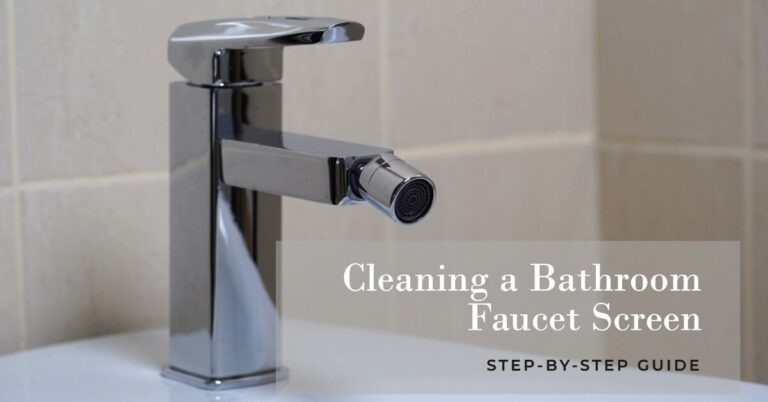The controversy surrounding the placement of a bathroom next to a kitchen is a topic that often sparks debates among homeowners, designers, and builders. This article will delve into this intriguing dilemma, exploring the various regulations and guidelines that govern such arrangements.
- Exploring the Bathroom-Kitchen Dilemma
- Understanding the Controversy
- Can You Have a Bathroom Next to a Kitchen?
- The Controversy Unveiled
- Balancing Benefits and Drawbacks
- Regulations and Guidelines for Placing a Bathroom Next to a Kitchen
- Navigating Building Codes and Health Standards
- Understanding Specific Regulations
- Design Considerations for Placing a Bathroom Next to a Kitchen
- Strategic Bathroom Placement
- Effective Ventilation
- Aesthetic Integration
- Optimal Lighting
- Conclusion
- Balancing Practicality and Regulations
- Key Takeaways
- Final Thoughts
Exploring the Bathroom-Kitchen Dilemma
Having a bathroom adjacent to a kitchen is a subject that has been the focus of much discussion in the world of interior design, plumbing, and home renovation. Homeowners often need clarification on the practicality of such a layout and the potential health and safety concerns it may raise.
Navigating Regulations and Guidelines
Before diving deeper into this topic, it’s essential to understand that building codes and regulations are pivotal in dictating how different home areas should be designed and configured. These regulations are implemented to ensure the safety and well-being of occupants and maintain the property’s structural integrity.
Understanding the Controversy
The core of the controversy revolves around the proximity of spaces where hygiene and food preparation coexist. On the one hand, proponents argue that having a bathroom conveniently located near the kitchen can be highly practical, especially for quick handwashing and easy access during meal preparation.
On the other hand, critics raise concerns about potential odor, ventilation, and cross-contamination issues that may arise when a bathroom is near a kitchen. This raises questions about whether such a layout aligns with the standards of cleanliness and health guidelines.
The Role of Regulations and Guidelines
Various building codes and health regulations have been established to address these concerns and guide the placement and construction of bathrooms and kitchens. These regulations are not arbitrary; they are founded on research, expert opinions, and historical data highlighting potential risks and best practices.
In the following sections of this article, we will delve deeper into these regulations and guidelines, providing insights into how they impact the decision-making process regarding placing a bathroom next to a kitchen.
Can You Have a Bathroom Next to a Kitchen?
Whether you can have a bathroom next to a kitchen is complex, and it’s met with a range of opinions within the home improvement and design communities. To better understand, let’s explore both sides of the argument and consider the benefits and drawbacks of such an arrangement.
The Controversy Unveiled
Benefits of Having a Bathroom Next to a Kitchen
- Convenience: One of the most frequently cited advantages is the convenience of having a bathroom nearby while cooking or enjoying a meal. It allows quick and easy access to handwashing facilities, which is particularly important for maintaining good hygiene in the kitchen.
- Space Optimization: In smaller homes or apartments where space is at a premium, combining bathroom and kitchen spaces can free up valuable square footage for other purposes. This approach aligns with the principles of space efficiency and functionality.
- Accessibility: For individuals with disabilities or mobility challenges, having a bathroom adjacent to the kitchen can enhance accessibility and make daily routines more manageable.
Drawbacks of Having a Bathroom Next to a Kitchen
- Odor and Ventilation: One of the primary concerns is the potential for bathroom odor to permeate the kitchen. Maintaining proper ventilation becomes crucial to mitigate this issue.
- Cross-Contamination: The proximity of a bathroom to a kitchen raises the risk of cross-contamination between areas meant for personal hygiene and food preparation. This is a key concern from a health and safety perspective.
- Aesthetics: From a design perspective, having a bathroom next to a kitchen may disrupt the living space’s aesthetics and flow. It can challenge achieving a cohesive and visually pleasing interior design.
Balancing Benefits and Drawbacks
The decision to have a bathroom next to a kitchen ultimately depends on your priorities, the available space, and willingness to address potential challenges. It’s essential to weigh the convenience and space-saving advantages against the potential issues of odor, cross-contamination, and aesthetics.
Regulations and Guidelines for Placing a Bathroom Next to a Kitchen
Understanding the specific regulations and guidelines that pertain to the placement of a bathroom next to a kitchen is essential for ensuring the safety, hygiene, and compliance of your home design. This section will provide an overview of these crucial regulations and explain why adhering to them is paramount.
Navigating Building Codes and Health Standards
Importance of Building Codes
Building codes are comprehensive sets of regulations that define the minimum standards for the construction and safety of buildings. Local, state, or national authorities develop and enforce these codes depending on your location. They cover various aspects of construction, including plumbing, electrical systems, structural integrity, and more.
Health and Safety Regulations
In addition to building codes, specific health and safety regulations address the placement of bathrooms near food preparation areas like kitchens. These regulations are designed to mitigate potential health hazards and ensure the well-being of occupants.
Compliance and Consequences
Failure to comply with building codes and health regulations can lead to serious consequences. These may include:
- Violation Penalties: Violating building codes or health standards can result in hefty penalties and fines. Local authorities typically impose these fines, which can be a significant financial burden.
- Insurance Implications: Non-compliance may affect your insurance coverage. If an incident occurs due to non-compliance, your insurance provider may refuse to cover damages, leaving you financially responsible.
Understanding Specific Regulations
Separation Distances
One critical aspect of these regulations is the requirement for separation distances between bathrooms and kitchens. This separation is intended to reduce the risk of odor transfer and cross-contamination.
Ventilation Standards
Proper ventilation is a key component of complying with these regulations. Adequate ventilation systems must be in place to ensure that odors from the bathroom do not linger in the kitchen area.
Design Considerations for Placing a Bathroom Next to a Kitchen
When contemplating the placement of a bathroom next to a kitchen, it’s crucial to consider various design considerations. These considerations will help you meet regulations and ensure your living space is functional and visually appealing.
Strategic Bathroom Placement
1. Separation Distances
As discussed in the previous section, adhering to separation distances is essential for preventing odor transfer and cross-contamination. Ensure that your bathroom fixtures are placed by the relevant regulations to maintain a sanitary and safe environment.
2. Privacy and Accessibility
Consider the privacy and accessibility of the bathroom. Ensure that there are no direct sightlines from the kitchen into the bathroom and that appropriate privacy measures are in place. Additionally, if you have family members or guests with disabilities, ensure the bathroom is accessible.
Effective Ventilation
3. Ventilation Systems
Invest in an efficient ventilation system for the bathroom to combat potential odor issues. This will help remove odors quickly and maintain a fresh atmosphere in the kitchen. Ensure that the ventilation system complies with ventilation standards.
Aesthetic Integration
4. Aesthetic Cohesion
Achieving an aesthetically pleasing integration of the bathroom and kitchen is crucial. Consider using similar color palettes, materials, and design elements to create a cohesive look. This can help mitigate the disruption often associated with having these spaces adjacent.
5. Cabinetry and Storage
Incorporate cabinetry and storage solutions that efficiently utilize the space between the bathroom and kitchen. This can help conceal bathroom fixtures and maintain a clean and uncluttered appearance.
Optimal Lighting
6. Lighting Design
Effective lighting design can enhance the functionality and aesthetics of both the bathroom and kitchen areas. Use a combination of task lighting, ambient lighting, and decorative fixtures to create a well-lit and inviting space.
By carefully considering these design considerations, you can balance functionality, aesthetics, and compliance with regulations when placing a bathroom next to a kitchen.
Conclusion
In this comprehensive exploration of whether you can have a bathroom next to a kitchen, we’ve delved into the multifaceted considerations surrounding this intriguing topic. Let’s summarize our findings and offer final thoughts on this design dilemma.
Balancing Practicality and Regulations
When contemplating the placement of a bathroom adjacent to a kitchen, it’s vital to balance practicality and regulations. While the convenience of having a bathroom nearby during meal preparation is undeniable, it must align with your region’s specific building codes and health standards.
Key Takeaways
Here are some key takeaways from our discussion:
1. Regulations Matter
- Building codes and health regulations are pivotal in determining whether you can have a bathroom next to a kitchen.
- Non-compliance can result in financial penalties and may affect your insurance coverage.
2. Design Matters
- Strategic bathroom placement, adherence to separation distances, and effective ventilation systems are essential for mitigating potential issues.
- Aesthetic cohesion, including color palettes and storage solutions, can help create a visually appealing living space.
3. Personal Priorities Matter
The decision ultimately rests on your priorities, the available space, and willingness to address potential challenges. Evaluating the benefits and drawbacks in the context of your unique situation is crucial.
4. Seek Professional Guidance
When in doubt, it’s advisable to consult with experts in interior design, plumbing, and construction. They can provide valuable insights and ensure that your design complies with regulations.
Final Thoughts
In conclusion, whether you can have a bathroom next to a kitchen is a complex issue with no one-size-fits-all answer. The decision should be made carefully, considering regulations, your lifestyle, and your commitment to maintaining a safe and functional living space.
We hope this article has provided valuable insights and guidance as you navigate this challenging design dilemma. Should you choose to proceed with this arrangement, remember that careful planning, compliance with regulations, and thoughtful design can help you achieve a harmonious and practical living environment.
If you have further questions or need assistance with any aspect of your home improvement journey, don’t hesitate to seek professional advice or explore additional home renovation and interior design resources.
Thank you for joining us on this exploration of the bathroom-kitchen conundrum, and we wish you success in creating a home that perfectly suits your needs and preferences.


